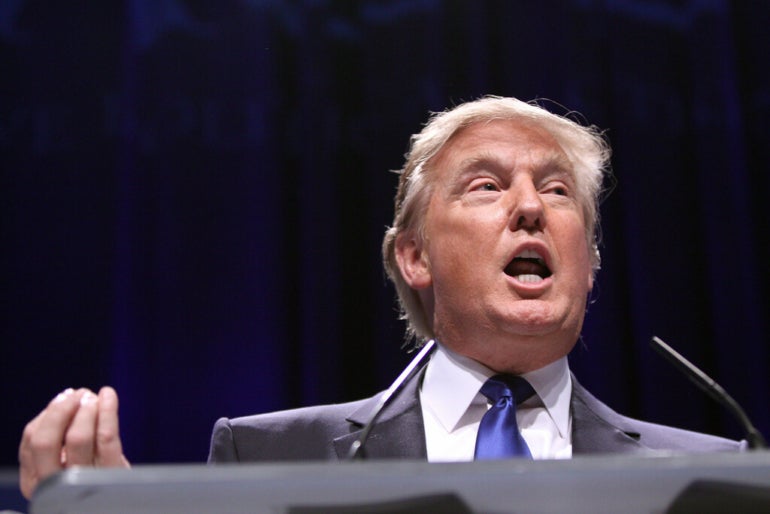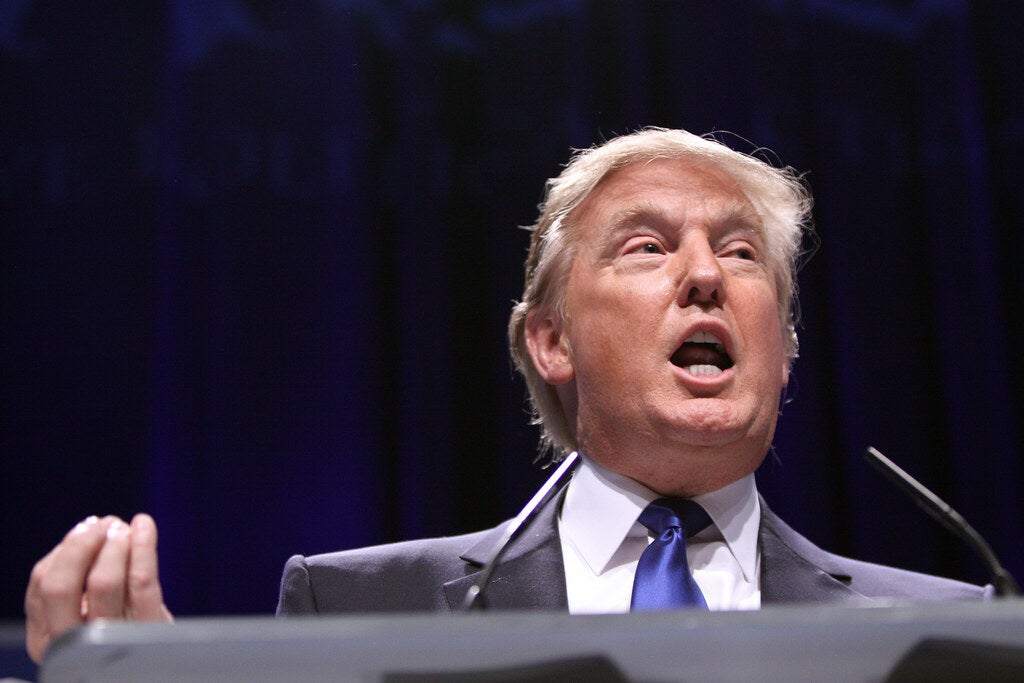Will They Affect Your Tech Prices?

US President Donald Trump temporarily reduced tariffs on most countries to 10%, but raised Chinese tariffs to a whopping 145%. As of April 18, the U.S. administration plans to meet with China regarding trade deals.
Hours after higher country-specific tariffs took effect on April 9, Trump announced that most countries would be receiving a 90-day pause to allow time for trade negotiations. Instead, they will be subject to a 10% levy while their representatives attempt to hammer out a deal with the US.
China was the notable exception to this pause, with Trump announcing that the country would be subject to an additional 125% tariff on all goods, effective immediately. On April 10, the White House clarified that this tariff is additive, meaning that it will be levied on top of the 20% tariff that was already in place. This brings the total tariff rates on Chinese goods to a staggering 145%.
Trump said that he was issuing this massive additional tariff on China because of a “lack of respect that China has shown to the World’s Markets.” China is the US’s third largest trading partner, after Canada and Mexico. Tech devices remain the US’s top import from China, so this 145% tariff will likely cause prices to rise significantly. This tariff will apply to common tech products such as smartphones, computers, monitors, game consoles, and lithium-ion batteries, as well as less obvious items such as small kitchen appliances and air purifiers.
Despite the 10% tariff rate for most countries, no changes were made to the 25% tariffs levied on Canada and Mexico, which were originally instituted in February. Goods compliant with the United States–Mexico–Canada Agreement (USMCA), including auto parts from Canada and Mexico, continue to remain exempt.
Trump’s reasoning behind the tariffs
Trump says that trade deficits — where the US spends more on imports from these nations than it earns through exports — are the result of higher foreign tariffs, non-tariff barriers, and economic policies abroad that depress wages and limit domestic consumption. Tariffs have also been applied to countries with low tariff rates but high trade surpluses with the US, like the UK and Australia.
The president managed to pass them without congressional approval, declaring a national emergency and claiming that persistent trade imbalances undermine national security by weakening US manufacturing and exposing supply chains to foreign dependence.
SEE: Trump’s Import Tariffs: How They’ll Shake Prices, Jobs, and Trade
Separately, Trump revoked the de minimis tariff exemptions on Chinese and Hong Kong imports valued at $800 or less. He announced the change on April 2, and it will take effect on May 2. This reversal will impact popular e-commerce companies, such as Shein and Temu, that ship directly to international consumers from warehouses in China and Hong Kong. Beginning May 2, consumers will have to pay 30% import fees, with a minimum of a $25 fee per package (this minimum will eventually rise to $50 per package). Trump also intends to extend this policy to other countries with comparable exemptions.
How will these tariffs affect you?
While these tariffs were brought to restore economic fairness, boost manufacturing, and create more jobs in the US, they are also expected to trigger price increases in tech products. According to CNBC, after Trump’s initial announcement on April 1, NVIDIA’s stock fell by 5%, while Apple and Amazon fell by 6%. This is due to fears that their operational costs will rise and supply chains, which rely heavily on overseas manufacturing and imports, will be disrupted.
US chipmaker NVIDIA should be somewhat shielded from the impact due to Trump’s exemption on semiconductors, sparing it from the 32% tariff on chips manufactured in Taiwan by TSMC. However, it remains unclear whether the semiconductor exemption will also cover the 10% baseline tariff on all imports. Furthermore, the Trump administration said on April 15 that exceptions for smartphones, computers and semiconductors from China may be temporary.
Apple products, mostly manufactured in China, India, and Vietnam, are likely to become more expensive as the company passes increased import costs onto US consumers. The prices of iPhones could rise to $3,500 if produced domestically. Amazon might do the same, as a high proportion of the goods listed on its marketplace are from Chinese sellers. The e-commerce giant will especially be impacted by the removal of the tax exemption on products under $800.
The US relies on China and Taiwan for approximately 80% of its foundry capacity for 20 to 45nm chips and about 70% for 50 to 180nm chips. Tech firms may attempt to shift sourcing to reciprocal tariff-free countries, but many will pass the additional costs to consumers instead.
Overall, the administration’s deal-making in regards to tariffs, essentially holding trade as a bargaining chip, has caused uncertainty and a dip in the stock market. On April 18, Trump said his administration is in talks with China about a new tariff deal that could come clear in the next three or four weeks.
First tariffs were set in February
These new tariffs come after those imposed in February — 25% on all imports from Canada and Mexico except energy resources and minerals, 20% on Chinese goods, and 25% on European Union tech components like semiconductors. With 80% of US foundry capacity for key semiconductor sizes currently reliant on China and Taiwan, experts predicted ripple effects across the entire tech sector, impacting everything from smartphones and cloud services to AI infrastructure.
At the time, Gil Luria, head of technology research at D.A. Davidson, told Bloomberg that part of the reason Trump is implementing tariffs on goods from the E.U. is in retaliation for the region “making a habit” of fining major US companies, such as Apple, Google, and Meta, for “whatever behavior they choose to penalize.” He added that the E.U. may become “combative” in response, and the level to which it does will determine the scale of the tariffs’ impact on the big tech players.
SEE: Were the White House’s Tariffs Calculations Done By AI?
Data centers and AI infrastructure face higher costs
The expanded tariffs on aluminium and steel from February are predicted to hit data center companies, as these materials are essential for server racks, cooling systems, and other infrastructure, driving up construction and equipment costs.
The additional expenditure and potential supply chain disruption may be reflected in increased cloud storage prices from companies like AWS, Google Cloud, and Microsoft Azure, as well as SaaS and AI companies that utilise large-scale data processing. It could also delay plans to build new data centers that companies have earmarked to meet the growing demand for AI.
Nevertheless, the stated intention is to reduce dependence on foreign adversaries. While this may result in higher prices for consumers in the short term, it could also drive investment in domestic industries and boost supply chain resilience.
SEE: Microsoft to Invest $80 Billion in AI Data Centers in Fiscal 2025
Tech companies ramp up US manufacturing
Even prior to the tariffs, many companies have been announcing plans to build new facilities within the US, which is a trend likely to continue. In March, TSMC pledged to expand its spend on building data centers in the US to $160 billion, which it deems the “largest single foreign direct investment in U.S. history.”
In February, Apple announced it will spend $500 billion on manufacturing and research in the US over the next four years. In January, the Stargate project was launched, which saw companies including SoftBank, OpenAI, and Oracle dedicate $500 billion to generative AI infrastructure in the US, including data centers.
In the press conference for the TSMC investment, Trump added that there are still “many (more companies) that want to announce” construction projects stateside. Such companies could absorb the business of foreign competitors in the chip, cloud, and other hardware markets.
TechnologyAdvice freelance contributing writer Kara Sherrer contributed to this article.
